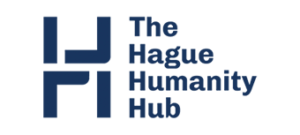Lessons for improving community health responses (International Alert)
As part of the Humanity Hub’s first seasonal programming theme, focusing on COVID responses, we will share insights by members of the Humanity Hub community and the Hague Peace & Justice ecosystem. This week, we are spotlighting International Alert’s insight on lessons from DRC for improving community health responses.
Following the devastating Ebola epidemic in Guinea, Liberia and Sierra Leone in 2013–16, the second Ebola outbreak in the Democratic Republic of Congo (DRC) in 2018 may seem like a whole other health crisis ago. But due to the coronavirus disease (COVID-19) and recent news of new Ebola outbreaks in Guinea and DRC, its lessons for effective health responses are more relevant now than ever.
The Kivu Ebola epidemic officially began on 1 August 2018, when four cases of the Ebola virus were confirmed in the eastern region of Kivu in DRC. The two-year-long outbreak that followed resulted in 3,481 cases and 2,299 deaths(this link will open in a new window), before the epidemic was finally declared over on 25 June 2020. During this period, the epidemic spread through the South Kivu, North Kivu and Ituri provinces of DRC, an active conflict zone with a public health system already crippled by the effects of a chronic humanitarian crisis.
A study conducted by International Alert identifies a series of social, cultural and political factors that prevented the epidemic from being effectively controlled and managed by DRC’s government, the World Health Organization (WHO), and local and international partners. These structural factors limited the take-up of public health measures and, in some cases, led to violent attacks against Ebola response workers. The lessons from the study are discussed here and compared to the COVID-19 pandemic response to highlight correlations and the importance of incorporating these lessons into future public health responses.
> Lack of trust
> Cultural clashes
> Local inclusion
> Lessons to learn
> Drawing parallels to COVID-19




